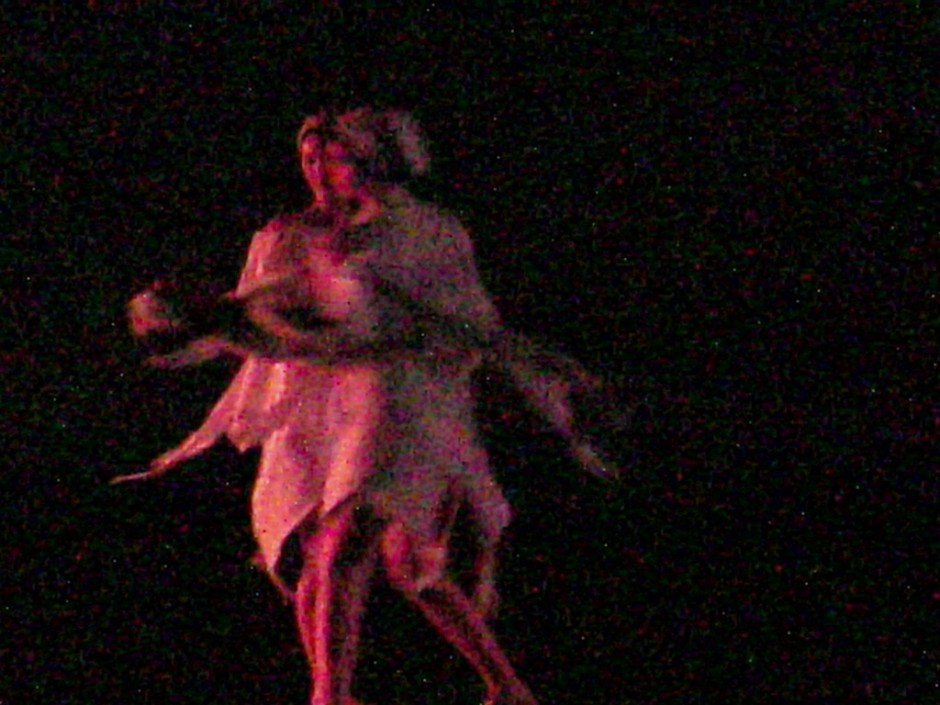Paul Sutherland, a Joffrey Ballet dancer who I knew as a student of the Grand Rapids Ballet School, was a tender man who sprinkled on baby powder and entered the studio every morning to perform hand-stand pushups against the wall. In class, he always addressed us as “dancers,” usually twice in a row, in his small, calm voice. Rather than immediately choosing his favorite dancers and ignoring all others, Mr. Sutherland found each one of us uniquely talented. He led us to understand what he meant by saying,
“Anyone can be a good dancer, but you must give of yourself to be a great dancer.”
I felt so validated, knowing that if I had something to say, I could tell it through dance. I thought, “This is what I’ve been aiming at.” It’s not just, “I’m being pretty,” it’s about depth. I had a sense that dancing could be bigger than I knew. Mr. Sutherland met us when at an awkward time in our youths. I’m sure we could have all used a lift.
Suddenly, importance was shifted from making beautiful lines with our bodies to self-expression. In his classes, I finally discovered the sense of detachment that was necessary for me to focus on the fleeting, internal sense of marrying myself to the music and giving way to the dance. He was so proud of our accomplishments, regardless of their scale. He used adjectives such as “beautiful” and “gorgeous,” welcome affirmations to our teenage ears.
Later, I met Phillip Jerry, another Joffrey dancer. Philip Jerry was not as nurturing as Sutherland, but in observing his work as a choreographer, I was awakened to new notions of what dance, specifically narrative dance, could look like. Setting Thornton Wilder’s famous play Our Town to Aaron Copland’s Fanfare for the Common Man and The Red Pony, Mr. Jerry created a masterpiece work that I was thrilled to be cast in, during Grand Rapids Ballet’s 1990 production. I was tall, so I took on the role of Emily’s mother.
I was shocked at Mr. Jerry’s simple choices of motif (though I hadn’t heard of the term “motif” yet), and I learned that monumental, epic-sounding music need not be accompanied by virtuoso dancing. Until participating in Jerry’s work, I had only witnessed traditional story ballets, with all of their splendor and embellishment. In the final scene of Our Town, George visits the grave of Emily and falls to his knees. Emily reaches toward him and then turns away to begin star-gazing and swaying in the common motion of the ancestors. The movement clearly marked the transition from life to death. The phrasing and breath of the movement captured me completely. Mr. Jerry spoke to us frequently about letting the movement speak for itself, and that if he had done his job properly, no extra emoting on behalf of the performers would be necessary. I was sad to hear that Philip Jerry departed this life 14 years ago. An obituary that appeared in The New York Times on August 3, 1996 told of his untimely death at the age of 41.
I send praise and gratitude to my primary teachers, Robert Estner and Charthel Arthur, who hosted many beautiful dance professionals in Grand Rapids, Michigan, during their tenure as directors of the Grand Rapids Ballet.
I was only one of the many students who benefited from these experiences. I have read biographies of some of my former classmates, like Mary Lohman, Joanne Jaglowski, and Lara Bremer, and I revel in their successes as well as my own. The Estners’ most accomplished student, is somewhat well-known in New York City and absolutely unparalleled as a presence onstage- New York City Ballet principal dancer, Maria Kowroski.
.
